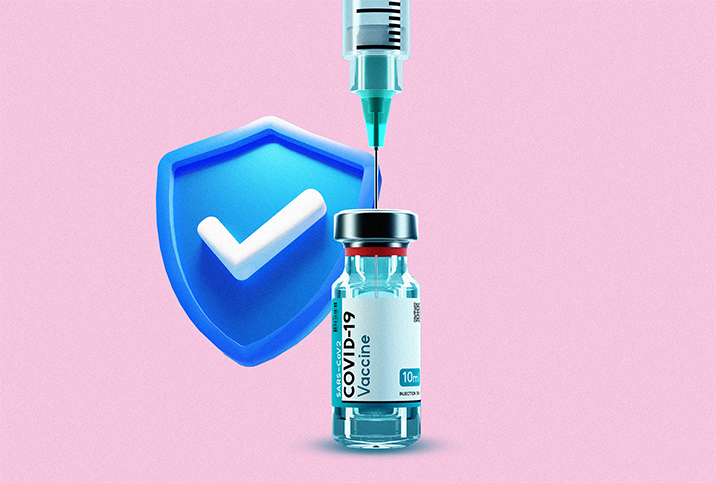Long COVID Can Compromise Your Circulatory System and Sexual Health

We have lived the statistics. In the United States, nearly 104 million people have contracted COVID-19 from the SARS-CoV-2 virus. More than 1 million Americans have died of the disease since early 2020.
Although President Biden declared the COVID-19 pandemic over in September 2022, it continues to be a daily problem that drains medical staff and resources across the country. More than 20,000 new cases are still reported per day.
For most people, a mild case of COVID-19 lasts one to two weeks for recovery. For more serious cases, symptoms can persist for as many as six to eight weeks.
And for some 24 million people, the recovery from their bout of COVID-19 is a slow and seemingly unending ordeal. Of that number, as many as 80 percent are having trouble carrying out daily activities and about 4 million have been unable to return to work while battling their symptoms.
Long COVID, sometimes called chronic COVID, refers to symptoms and complications lasting longer than four weeks. These symptoms include fatigue, fever, shortness of breath, cough, chest pain, headaches, "brain fog," diarrhea and rashes.
Patients with long COVID might develop new health complications such as autoimmune conditions, diabetes, and heart and neurological abnormalities. Depending on the severity of their experiences, patients are also at risk for post-intensive care syndrome (PICS), with ailments including chronic muscle weakness, cognitive and thought impairment, and PTSD indications.
From mild to chronic
Eli, who requested her full name not be used, contracted COVID-19 in New York City when the first wave struck in March 2020.
"I contracted COVID around March 16, [but] my initial illness was mild: low fever, cough and difficulty breathing," she recalled. "Over the course of the next 14 days, my symptoms began to worsen."
Eli said she went to the emergency room a few times. Although treated for pneumonia, Eli was never hospitalized.
"My symptoms began to improve slightly," she said. "After about a week, my fever [returned to] 101 to 102 [degrees] and remained in that range until the beginning of June [2020]. It was in that period between April and June that I first began to experience what we have come to call long COVID. Those initial months were disorienting. The medical system was overwhelmed with people dying, and I just kept hearing I would 'likely be back to normal in a few months.' Months have turned to years, and I have never recovered to my pre-COVID-19 baseline."
Circulatory and inflammation issues
A major symptom of long COVID is its damaging effect on the lining of the blood vessels, the endothelium. This damage exacerbates preexisting heart and blood vessel diseases and can cause problems for patients with no prior respiratory or circulatory conditions.
A study published in July 2022 by Nature Medicine indicated that anyone dealing with long COVID may experience other consequences due to a compromised circulatory system, such as low libido and erectile dysfunction (ED).
In a more recent study published in September 2022 by Nature Medicine, findings suggest COVID-19 might elevate the risk of developing serious neurological conditions in the 12 months following infection. Researchers at Washington University School of Medicine in St. Louis and the Veterans Affairs St. Louis Health Care system reported that the federal health data they analyzed suggested an increased risk of anxiety, cognitive and memory issues, depression, migraine headaches and strokes.
Our respiratory and circulatory systems become strained due to our immune system overreacting and causing chronic inflammation. Our body's defense mechanism creates inflammation when our tissues are damaged by disease, trauma and toxins, and the SARS-CoV-2 virus is no different. The problem lies in the evidence that even after the COVID-19 infection has cleared, extensive inflammation remains.
Jennifer Snyder-Cappione, Ph.D., an assistant professor of microbiology at the Boston University School of Medicine, confirmed that in her research of long COVID, one symptom stands out.
"The most common, long-lasting and debilitating complaints relate to fatigue," she said. "Many very active and healthy people become extremely tired after performing simple tasks, like climbing one flight of stairs or making their bed."
There could be many causes of fatigue for long COVID patients, but respiratory complication due to inflammation is one possibility.
Living with long COVID
"I have good days and bad days, which I measure by how difficult they are to endure," Eli explained. "Sometimes the pain is debilitating: headaches that feel like a concussion or a burning all over my skin as if I've been dipped in a hot fire. If I read or try to write, my eyesight goes blurry and pressure builds behind my eyeballs. Harder for me to bear are the cognitive symptoms, fatigue and brain fog.
"The changes to my ability to think clearly, organize thoughts, remember words, be counted on [or] to perform have cut to the core of how I know myself," Eli continued. "I have learned I have a small envelope of energy I can use each day before I push beyond my limit and exacerbate all my symptoms. The term is PEM [post-exertional malaise]. The exertion can be cognitive, emotional or physical. I have had to redefine exertion to mean anything my body needs energy for, such as digesting food.
"So often on the outside, I can appear normal and healthy to the person in front of me, but inside, my body is fighting for an ever-dwindling supply of resources," she added. "There is now a physical price to pay for engaging, participating and being curious."
Regaining physical, emotional and sexual health
The COVID-19 pandemic has severely compromised the health of many people. The importance of shared information is strategic in finding new therapies and protocols to ease long COVID symptoms.
Throughout her journey, Eli has been to multiple specialists and was "met with empathy but little guidance." She said the most consistent source of information and support has come from the website wearebodypolitic.com.
"The group was started by journalists and scientists who also happened to have long COVID," she explained. "In the early days, it was the only place I could [find] a community of people [with the same] wide-ranging systemic problems [as I had]. As clinical trials and novel therapies emerge, I hear about them through this group. People share what tests have been helpful for diagnostics and which doctors or long COVID clinics are proactive with new treatments."
In July 2022, Eli found a doctor who specializes in treating PEM and post-viral illnesses.
"I have been on a new medication for the last two weeks and that has been increasing my envelope of energy a bit and just that is game-changing," Eli said. "I would not have been able to type these thoughts two weeks ago. Progress."
Finding help
Long COVID has been added as a recognized disability under the Americans With Disabilities Act.
But Eli pointed out: "The lack of support, lack of substantial public health mitigations means that [some] people navigating this crisis are pushed further to the margins and deeply isolated."
Edward Courville, M.D., is an inpatient acute care physician in Beverly, Massachusetts, and has treated many acute COVID patients.
"There is no one approach that fits all patients, and usually care requires a multidisciplinary approach," he said. "Referral to a center that specializes in long COVID is ideal but not always available."
Speaking with your healthcare professional about referrals to therapists and medical subspecialists based on symptoms and severity can be helpful in the absence of a nearby long COVID referral center.
There is also a nationwide study, the RECOVER Initiative, which is looking at the effects of long COVID. Its website offers the latest news on research, treatments and resources for finding much-needed patient support.


















